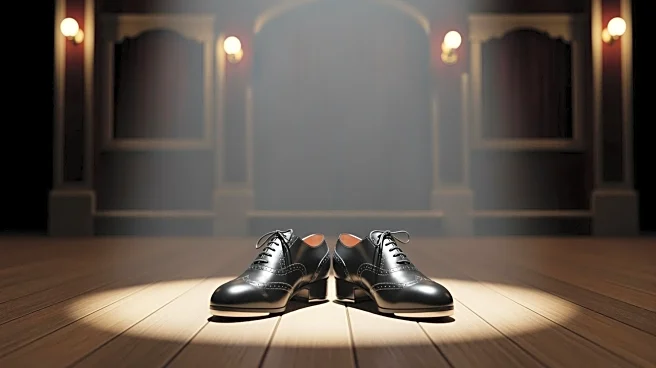What's Happening?
Howard Blume, founder of The Tapitalists, is set to present his latest work, 'A Tap of the Creature’s Curse,' at the Nocturne Theatre in Glendale. The production will feature renowned tap dancer Reggio
'The Hoofer' McLaughlin and opera singer Laura Parker. Scheduled for November 8 and 9, 2025, the show promises a blend of high-quality tap dancing, social commentary, comedy, and suspense. Blume, who is also a journalist, has crafted a narrative that revolves around a mysterious monster in the fictional city of Vermin, California. The plot involves disappearances from a retirement community, with tap dance integral to the unfolding mystery.
Why It's Important?
The production highlights the unique fusion of tap dance with storytelling, aiming to attract both tap aficionados and newcomers to the art form. By incorporating social commentary and humor, Blume's work seeks to engage audiences on multiple levels, potentially broadening the appeal of tap dance. The involvement of seasoned performers like McLaughlin and Parker adds credibility and excitement to the show, which could influence future productions in the genre. The event also underscores the cultural significance of tap dance as a dynamic and evolving art form.
What's Next?
Following the performances in Glendale, the success of 'A Tap of the Creature’s Curse' could lead to additional shows or tours, expanding its reach beyond local audiences. The production may inspire other artists to explore similar creative endeavors, blending dance with narrative storytelling. Audience reactions and feedback will likely shape future iterations of the show, potentially influencing Blume's approach to choreography and production design.
Beyond the Headlines
The show raises questions about the nature of monsters and societal perceptions, encouraging audiences to reflect on deeper themes. It also highlights the importance of preserving and innovating traditional art forms like tap dance, ensuring their relevance in contemporary culture. The collaboration between Blume and McLaughlin serves as a testament to the enduring legacy of tap dance and its ability to adapt and thrive.













